Lucas Museum delays opening to 2025, ‘all areas of construction’ moving forward
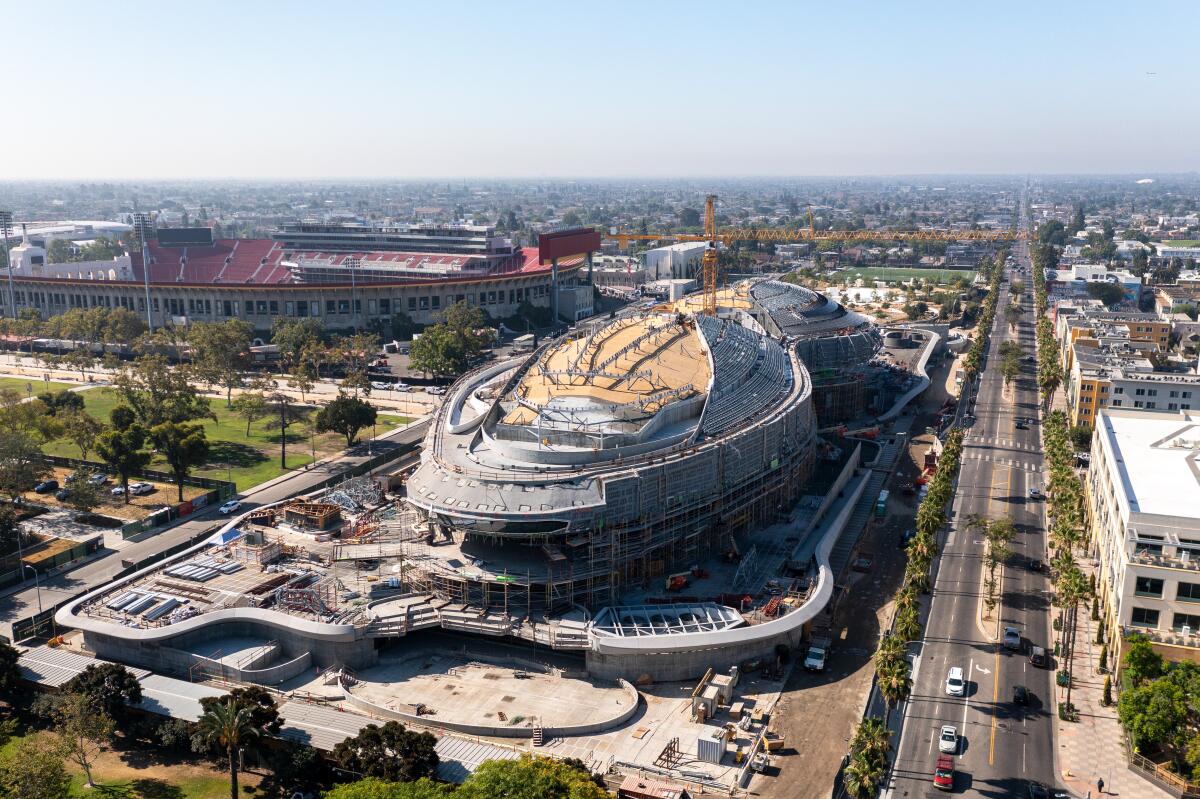
- Share via
The $1-billion Lucas Museum of Narrative Art, which is rising in Exposition Park, has pushed back its opening date from 2023 to 2025. The two-year delay, the museum says, is due to pandemic complications, specifically supply chain issues that have made the procuring of certain construction materials difficult.
“It’s not one thing, it’s an accumulation of things,” Lucas Museum Director Sandra Jackson-Dumont says in an interview. “It’s definitely supply chains, delays in getting materials, manufacturer issues, there are all these pieces that have together created this kind of impact on the schedule.”
The museum broke ground in March 2018 and “topped out” — the term for setting the final beam within its steel structure in place — in March 2021. In April 2021, the museum pushed its targeted 2022 debut by a year because of pandemic-related delays. COVID-19 health and safety protocols had slowed construction, it said at the time. Now, Jackson-Dumont says, two more years are needed not only for construction, but to also make sure the finished building is suitable to house art.
“We wanted to give ourselves time, once the building is complete, to make sure the building goes through the proper readiness and remediation processes, so we can ensure the artwork is safe coming into the building,” Jackson-Dumont says, referring to temperature controls and other environmental conditions. “And that process — the mitigation — really takes a period of time.”
The timeline delay, Jackson-Dumont says, will not affect the projected cost of the building. “The budget — that’s where we are and we had a contingency in place,” she says.
Filmmaker George Lucas and wife Mellody Hobson are “the primary funding source” for the museum. Should the cost go up, Jackson-Dumont says, “they are committed to supporting this project.”
“But we are not talking about the cost going up, that’s not a conversation we’re having,” she adds. “They are committed to realizing this incredible asset.”
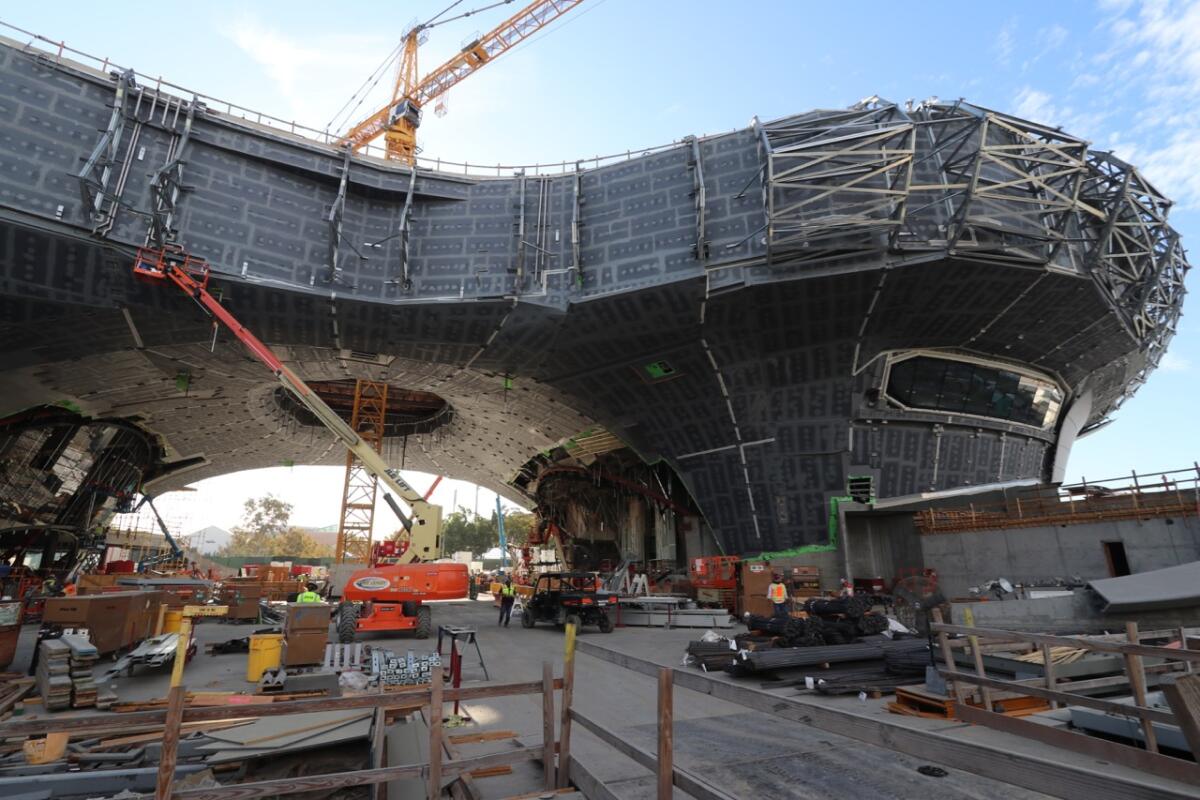
The five-story, 300,000-square-foot, futuristic-looking museum, which is rising next door to the L.A. Memorial Coliseum, was designed by MAD Architects founder Ma Yansong. It has an arched belly, creating a shaded, open-air plaza underneath that visitors can pass through into Exposition Park. The building is primarily composed of steel, glass and concrete along with wood, geofoam, fiberglass-reinforced polymer and plaster.
Geofoam has been a problem — the lightweight filling material, often used to help create topography, is one material that’s been affected by supply chain issues, the museum says. There have also been issues with shipping parts from Europe, such as light fixtures, glass and custom elevator components. COVID safety protocols, ensuring on-site workers are safe, continue to slow construction as well.
Still, Jackson-Dumont says, “progress in all areas of construction” is moving forward. The museum is responding nimbly and creatively, she says, shifting focus in order to keep construction going. That’s meant accelerating construction in certain areas they might not have gotten to yet, while other areas slowed.
“We’re going where we can work,” Jackson-Dumont says.
One construction milestone, of late, is the installation of more than 1,500 curved, fiberglass-reinforced polymer panels that make up the building’s surface. They’re currently being affixed to the southern side of the building. Each creamy white panel is hand-finished and unique; together, they give the building an organic, biomorphic feel, the museum says.
“It feels so significant,” Jackson-Dumont says of the panel installation. “It almost feels like a topping out in some ways, because you’re starting to see the skin of this building.”
The fourth-floor galleries — about 80,000 square feet of exhibition space to showcase fine and popular art from Lucas’ personal collection as well as “Star Wars” ephemera — are well underway, with the area’s ceiling grid and permanent walls complete. Mechanical, electrical, plumbing and life safety systems are roughed-in, meaning mostly installed. Parts of the glass elevators are being installed, as are window installations.
The museum’s two theaters and classroom spaces are also in motion , as are the restaurant and cafe, gift shop and event spaces.
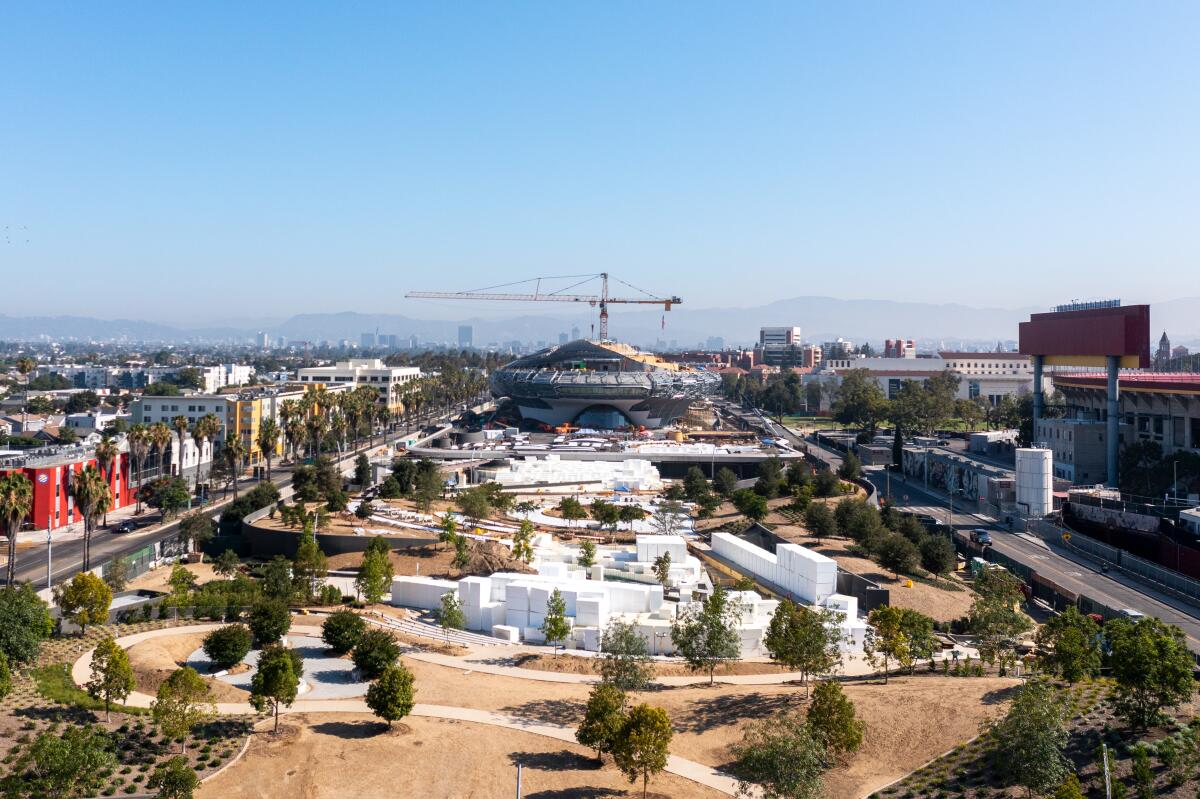
Development of the museum’s 11-acre campus, which replaces a parking lot, includes a park and gardens designed by Studio-MLA founder Mia Lehrer. Planting has begun of more than 200 trees, including cathedral and cork oaks, jacarandas and pink trumpet trees. Eventually there will be more than 30 species, and additional landscaping will feature drought-tolerant and California native plants. The park’s amphitheater benches are installed and work is underway on a pedestrian bridge and hanging gardens.
One thing Jackson-Dumont is geeking out on: the two underground garages. They’ll include 2,300 parking spots, 600 more than were formerly available in the aboveground asphalt lot. She’s also especially excited about the “porous design” of the building and surrounding campus — how it flows, seamlessly, into Exposition Park. “It feels like a continuous campus connecting us to these already existing great resources,” Jackson-Dumont says.
The Lucas Museum has also been growing its collection of more than 100,000 artworks across painting, sculpture, photography, movies, murals, comic art, book and magazine illustrations and filmmaking objects and ephemera. It has particularly deep holdings of work by Norman Rockwell, Ernie Barnes, Jacob Lawrence, Kadir Nelson and N.C. Wyeth, among other artists.
This year the museum acquired a piece from Oxnard-based Jaime Hernandez from the alternative comic “Love and Rockets,” a series he created with brothers Gilbert and Mario. The piece originally appeared as a Village Voice cover in 2010. The museum also acquired a series of illustrations from Tongva and Scottish L.A-based artist Weshoyot Alvitre. They’re from her 2019 children’s book, created with Traci Sorell, “At the Mountain’s Base,” about a Native American World War II pilot.
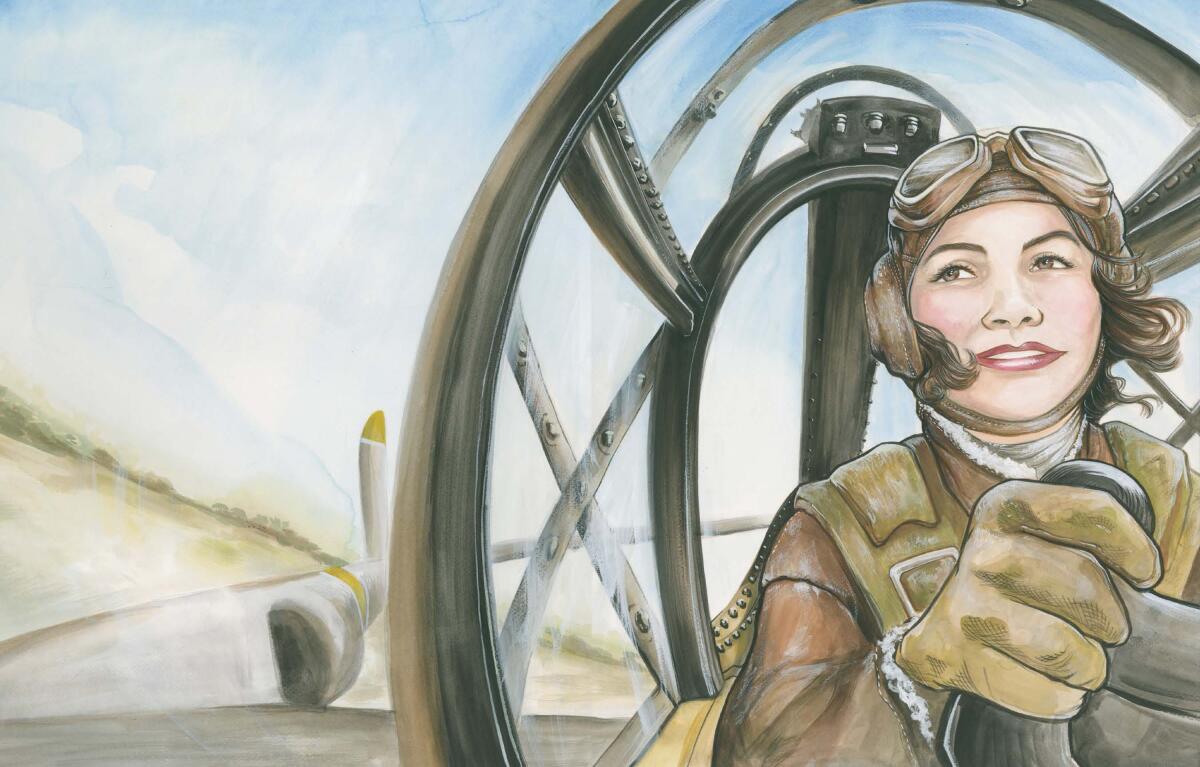
Other 2022 acquisitions: a print series by Chitra Ganesh, “Architects of the Future — Away From the Watcher” (2014); a photograph by the late Chicana artist Laura Aguilar, “Day of the Dead” (1989-90); a watercolor and collage work by Bryan Collier, created for the cover of the 2016 children’s book “City Shapes,” by Diana Murray; and an illustration by Grace Lin, “We Eat a Little Bit of Everything” (2001), from her children’s book “Dim Sum for Everyone!”
“It’s wonderful to have acquired a significant amount of Latinx work in the past year,” Jackson-Dumont says. “We also are thrilled about many of the L.A.-based artists that we’ve acquired. And we’re particularly excited about having artists from the Tongva people in our collection.”
“The way I think about acquisitions,” she says, “I’m thinking about the whole. So I’m very excited about other works we’ve collected since 2020, as well, that I think are pretty incredible.”
Chief among them: a 1975 painting, acquired last May, by Robert Colescott, “George Washington Carver Crossing the Delaware: Page From an American History Textbook.” Jackson-Dumont has called it a vehicle “to explore and unpack racially, socially and historically charged and significant figures.”
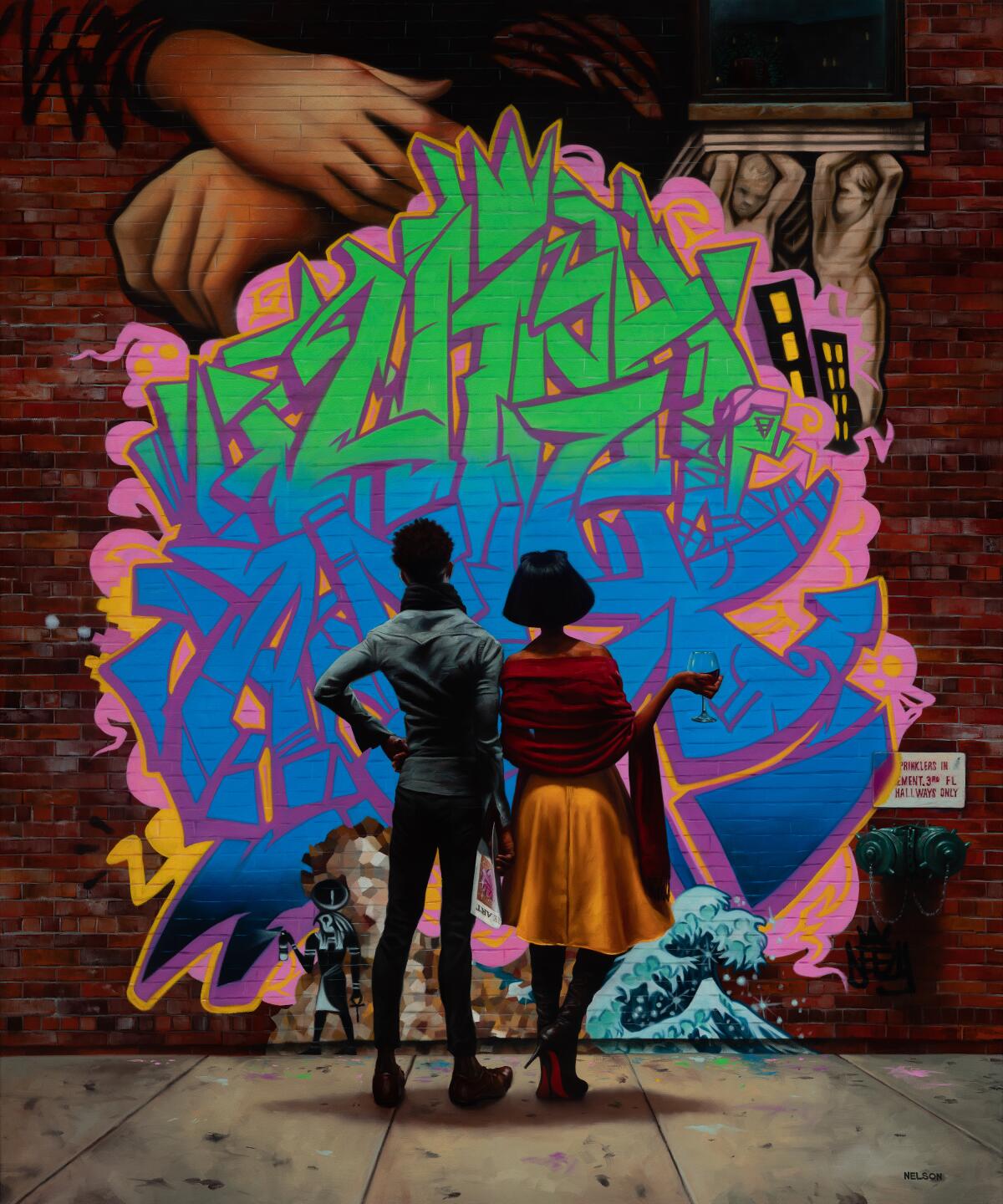
Two significant 2020 acquisitions are both responses to the work of Norman Rockwell: the series of photographs, “Four Freedoms Set II” 2018, by For Freedoms, an artist collective founded by Hank Willis Thomas and Emily Shur, in collaboration with Eric Gottesman and Wyatt Gallery as well as Kadir Nelson’s painting “Art Connoisseurs” (2019), which appeared on the cover of the New Yorker in 2019. Last year the museum also added Kerry James Marshall’s “RHYTHM MASTR Daily Strip (Runners)” (2018) to its collection, a work that addresses Black representation — or lack thereof — in mainstream comics.
Important works by Frida Kahlo and Alice Neel were acquired last fall along with contemporary works by Southern California artists including Cara Romero and Criselda Vasquez. The museum also acquired key archives of work by José Guadalupe Posada and Judith F. Baca.
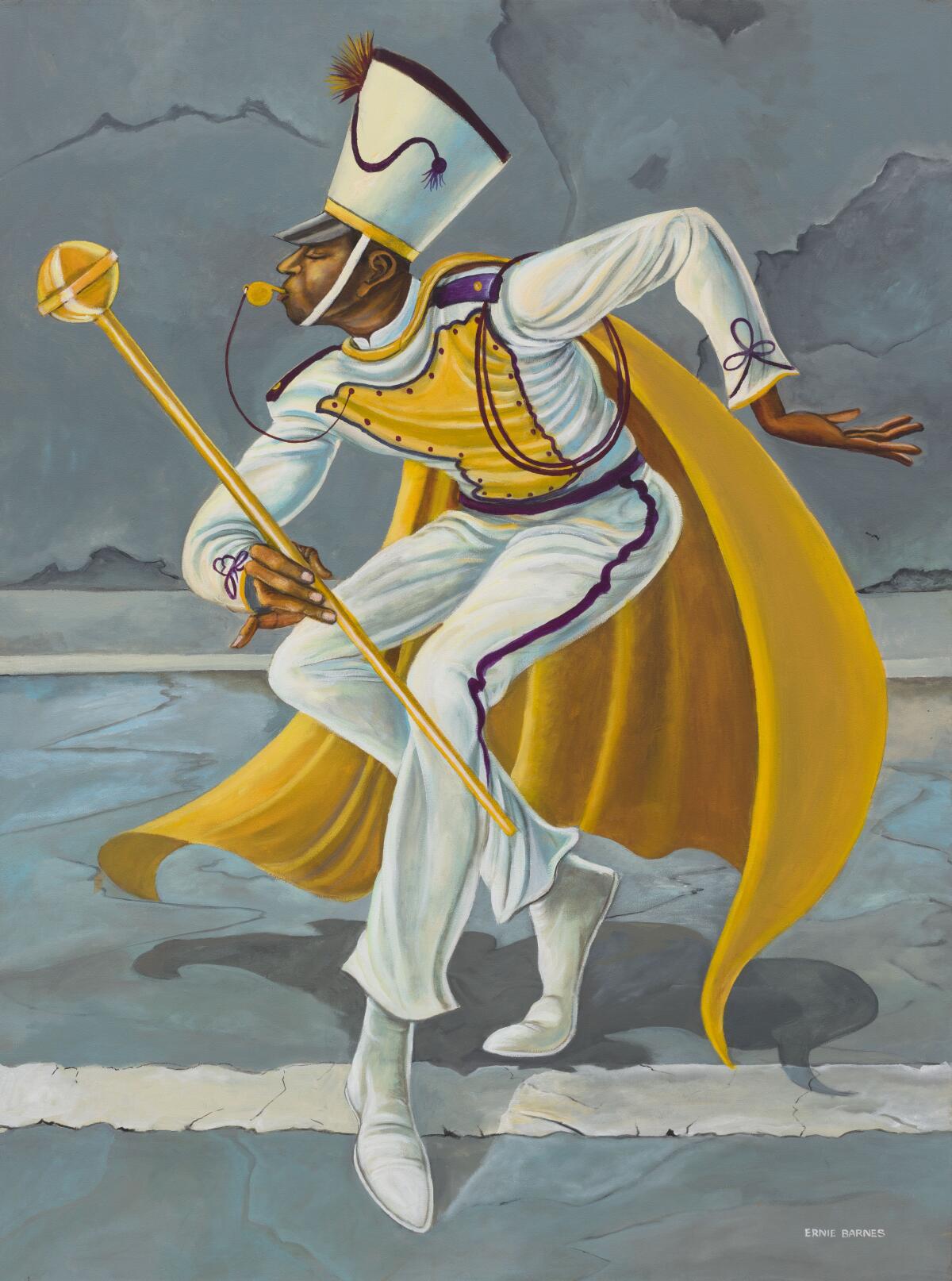
Even as the museum rises, several works in its collection are on view elsewhere, including the Colescott work, now at the New Museum in New York — it will travel to the Metropolitan Museum of Art later this fall. And two works by Diego Rivera are currently on view at the San Francisco Museum of Modern Art as part of a survey of the artist’s work.
All of which could be considered an essential, if urgent, response to the tumultuous times we live in, Jackson-Dumont says.
Narrative art, she says, “shapes how we see each other, how we talk about each other, interact with each other, how we love, hate, control, do whatever with each other. It’s an amazingly powerful, socially shaping art form. These stories actually contribute to the world, and we need places where we unpack them. It actually can create a more humane society.”
Regarding the timeline delays, she adds: “I find it fascinating that we’re doing this amidst COVID, amidst all that’s happening. And it’s not just a construction site. We’re building an institution, a 200-plus-year proposition. And we’re doing it amidst the most uncertain moments in our time.”
More to Read
The biggest entertainment stories
Get our big stories about Hollywood, film, television, music, arts, culture and more right in your inbox as soon as they publish.
You may occasionally receive promotional content from the Los Angeles Times.











